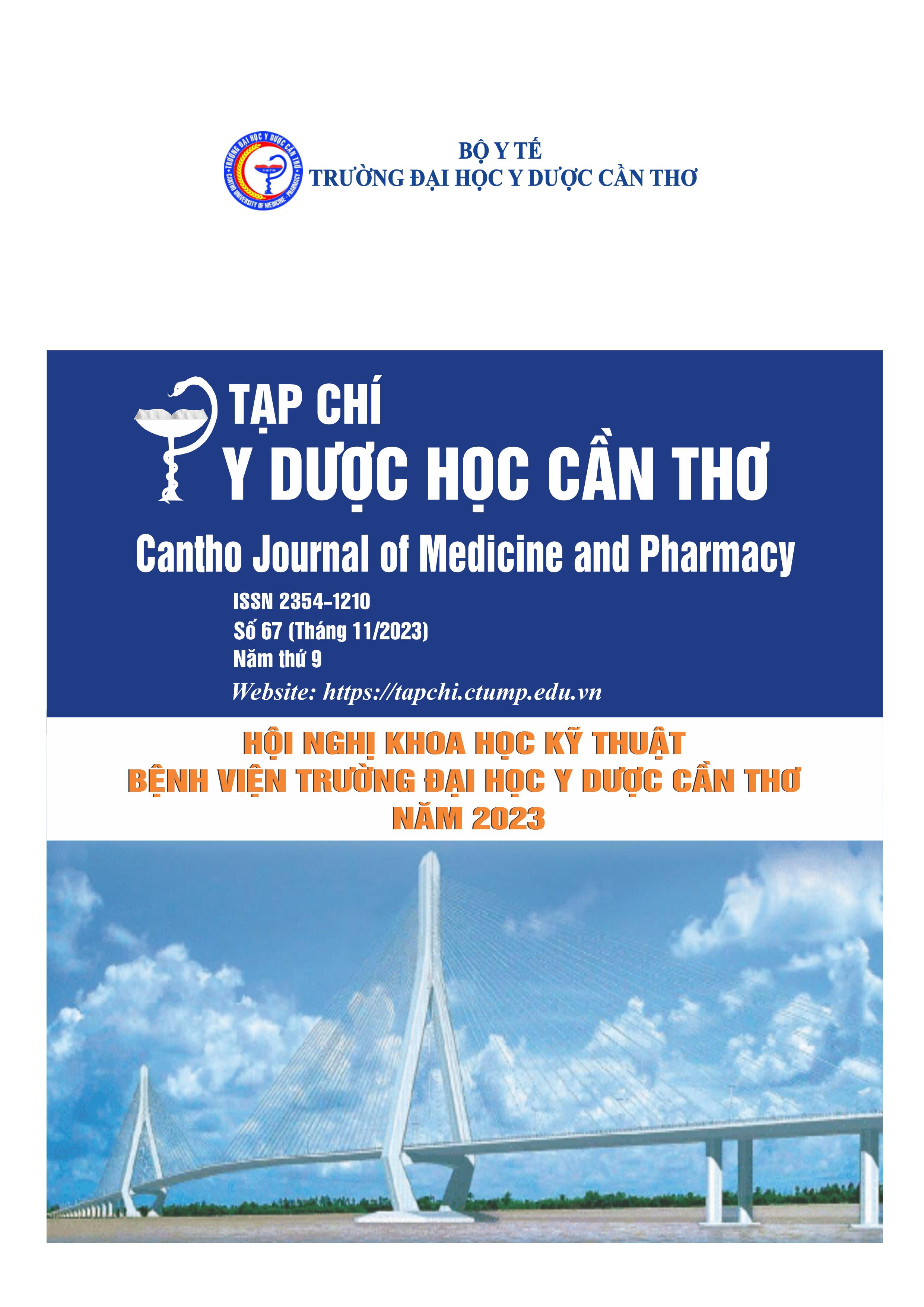TREATMENT OF OVERACTIVE BLADDER WITH MIRABEGRON AT CAN THO UNIVERSITY OF MEDICINE AND PHARMACY HOSPITAL: A CASE REPORT
Main Article Content
Abstract
Background: Overactive bladder is characterised by urinary urgency, usually accompanied by urinary frequency and nocturia, with or without urgency incontinence, in the absence of urinary tract infection or any other obvious pathology. The pathophysiology of overactive bladder is not completely understood but the β3-adrenoceptor, which is highly expressed in the urinary bladder, is thought to be important for mediating human detrusor relaxation during the storage phase. Mirabegron is the first commercially available selective, β3-agonist for the treatment of overactive bladder. Objectives: To evaluate the results of treating overactive bladder with Mirabegron in a clinical case. Materials and methods: We reported a 40-year-old female patient accompanied by urinary frequency and urgency, patient was diagnosed with overactive bladder and treated with mirabegron 50mg/day for 3 months. Results: After 3 months, the patient's symptoms significantly improved, decreased of urination times. Adverse effects were not recorded in patients. Conclusions: A clinical case shows the effectiveness and safety of mirabegron in the treatment of overactive bladder disease.
Article Details
Keywords
Overactive bladder, Mirabegron, β3-agonist
References
2. Vũ Lê Chuyên, Huỳnh Đoàn Phương Mai. Xác định tỷ lệ mắc bàng quang tăng hoạt của người lớn tại Việt Nam. Y Học Thành Phố Hồ Chí Minh. 2016. 20(2), 158-162.
3. Eapen RS, Radomski SB. Review of the epidemiology of overactive bladder. Res Rep Urol. 2016. 8, 71–76.
4. Wolff GF, Kuchel GA, Smith PP. Overactive bladder in the vulnerable elderly. Res Rep Urol. 2014. 6, 131–38. doi: 10.2147/RRU.S41843.
5. Nambiar AK, Arlandis S, Bø K, et al. European Association of Urology Guidelines on the
Diagnosis and Management of Female Non-neurogenic Lower Urinary Tract Symptoms. Part
1: Diagnostics, Overactive Bladder, Stress Urinary Incontinence, and Mixed Urinary Incontinence”, Eur Urol. 2022. 82(1), 49-59. doi:10.1016/j.eururo.2022.01.045.
6. Krauwinkel W, van Dijk J, Schaddelee M, et al. Pharmacokinetic properties of mirabegron, a beta3-adrenoceptor agonist: results from two Phase I, randomized, multiple-dose studies in healthy young and elderly men and women. Clin Ther. 2012. 34(10), 2144–2160. doi:10.1016/j.clinthera.2012.09.010.
7. Wagg A, Staskin D, Engel E, Herschorn S, Kristy RM, Schermer CR. Efficacy, safety, and tolerability of mirabegron in patients aged >/=65yr with overactive bladder wet: a phase IV, double-blind, randomised, placebo-controlled study (PILLAR), Eur Urol. 2020. 77(2), 211– 220. doi:10.1016/j.eururo.2019.10.002.
8. Herschorn S, Staskin D, Schermer CR, Kristy RM, Wagg A. Safety and tolerability results from the PILLAR study: a Phase IV, double-blind, randomized, placebo-controlled study of mirabegron in patients >/= 65 years with overactive bladder-wet, Drugs Aging. 2020. 37(9), 665–676. doi:10.1007/s40266-020-00783-w.
9. Griebling TL, Campbell NL, Mangel J, et al. Effect of mirabegron on cognitive function in elderly patients with overactive bladder: moCA results from a Phase 4 randomized, placebocontrolled study (PILLAR). BMC Geriatr. 2020. 20(1), 109. doi:10.1186/s12877-020-1474-7.


